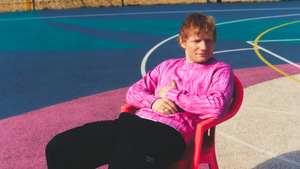Ed Sheeran has urged the US Supreme Court to refuse to intervene in a song-theft dispute in which he is accused of ripping off Marvin Gaye’s ‘Let's Get It On’ when writing his hit ‘Thinking Out Loud’.
Lower courts have ruled that Sheeran did not infringe the copyright in ‘Let's Get It On’ when writing 'Thinking Out Loud'. But Structured Asset Sales, which owns a share of the copyright in Gaye’s song, claims that they did so by deferring to guidance from the US Copyright Office on a crucial copyright law technicality.
And that, SAS argues, is grounds for the top court to review the case, because the Supreme Court itself last year said that judges should apply their judgment “independent” of what any relevant branch of government might say. Which would include the Copyright Office in copyright cases.
However, according to Sheeran and his business partners, the lower courts - most recently the Second Circuit Appeals Court - did not in fact defer to the Copyright Office when ruling in their favour. Instead they “correctly and independently” interpreted the “plain language” of the 1909 US Copyright Act, which was the relevant law in this case.
As it happens, Copyright Office guidance agrees with the Second Circuit’s conclusion, but - Sheeran insists - the judges reached that conclusion themselves by interpreting the 1909 act. As have two other US appeal courts when dealing with the same technicality in other similar cases, both of which reached the same conclusion.
Sheeran was sued twice over ‘Thinking Out Loud’, by both SAS and the estate of the co-writer of ‘Let’s Get It On’, Ed Townsend. The Townsend estate ultimately decided not to appeal after a jury sided with Sheeran. However, SAS has pursued every route of appeal open to it.
The crucial copyright technicality relates to whether or not, under US law, copyright only protects a work in the form that it was submitted to the US Copyright Office when the copyright was first registered.
That’s important for legacy composers and artists because, up until 1978, the only thing that could be provided as the ‘deposit copy’ when registering a new copyright was sheet music, with recordings of songs not being permitted.
That has a practical impact where the writer or owner of a pre-1978 song - like ‘Let’s Get It On’ - believes that a new song rips off their work, but the similarities between the old song and the new song are much more apparent in the most famous recorded versions than in the sheet music.
After all, elements may be added in the studio or through the production process that become key components of the song, but which are not reflected in the sheet music.
If copyright only protects the song in the form it was submitted to the Copyright Office as sheet music, it’s potentially much harder to prove that the new song infringes the copyright in the old song.
As a result, SAS was keen to argue that its copyright claim should not be restricted to the deposit copy of ‘Let's Get It On’. But the district court, and then the Second Circuit, ruled that SAS’s claim was indeed restricted in that way.
SAS’s argument that that judgement was based on Copyright Office guidance is relevant in its bid to get the Supreme Court to intervene, because of a ruling the top court made last year in a case called Loper Bright Enterprises v Raimondo.
That had nothing to do with copyright law, but did consider whether judges should give deference to the opinions of government agencies that oversee or enforce a relevant area of law. It concluded that they should not.
When SAS asked the Supreme Court to intervene in its dispute with Sheeran in March, it cited that ruling, and how the Supreme Court had said that “judges have always been expected to apply their ‘judgment’ independent of any” relevant branch of government when “interpreting the laws those branches enact”.
Courts “need not” and under the Administrative Procedure Act “may not defer to an agency interpretation of the law simply because a statute is ambiguous”, it added.
But, of course, that is only relevant if the Second Circuit did actually rely on Copyright Office guidance when reaching its conclusion. Sheeran is adamant that it did not.
SAS “falsely contends the Second Circuit disregarded this court’s decision in Loper Bright Enterprises v Raimondo”, says his submission to the Supreme Court.
It “manufactures this falsity” by claiming that “the Second Circuit erroneously deferred to the Copyright Office’s purported unilateral determination that copyright protection for a musical composition under the 1909 Copyright Act extended only to matter expressed in the written sheet music deposit copies”.
However, Sheeran insists, “the Second Circuit did not defer to any supposed unilateral determination by the Copyright Office”. Instead judges there “relied on the unequivocal language of the 1909 Copyright Act” which they “found to be clear”.

